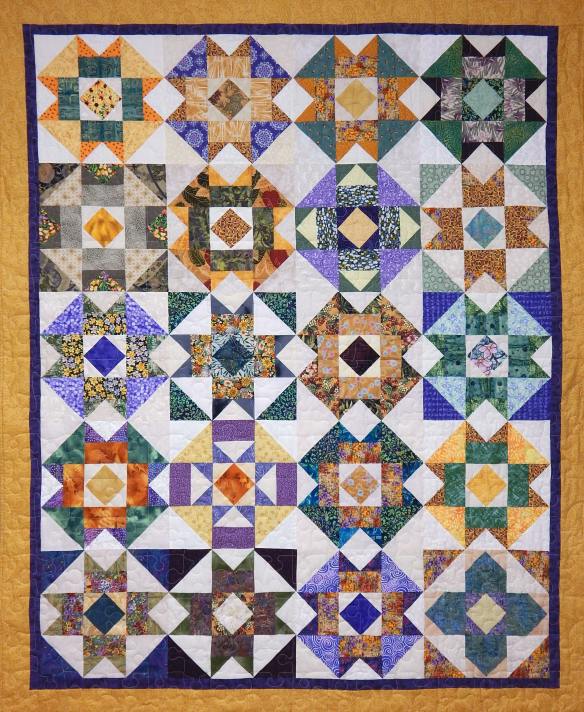Quite a while ago one of my blogging friends (was it you, Clare?) commented that gold quilting thread blends well on most any quilt top, so I tried it. Here’s one quilted for me by Julia Madison. It has gold in it, of course, but I thought the gold thread worked out quite well. It shows up on the solid fabric but blends with the prints.
I didn’t realize I used gold in my quilts so often!
On this more recent quilt, I asked Julia to use a thread recommended by another blogging friend, Elizabeth. It is 40 weight polyester but looks metallic. If you’ve ever tried quilting with metallic thread, you know what a find this is! Julia said she had no trouble quilting with it. Here’s what it looks like on the quilt:
If you’ve ever tried quilting with metallic thread, you know what a find this is! Julia said she had no trouble quilting with it. Here’s what it looks like on the quilt:
Meanwhile, I made a Christmas table runner for a class I’m going to teach. I quilted it myself using another recent find, InvisaFil thread.  This thread is very thin, intended to show the quilting but not necessarily the stitches. I did some stitch in the ditch with it and found it much better for that purpose than regular thread I have used in the past.
This thread is very thin, intended to show the quilting but not necessarily the stitches. I did some stitch in the ditch with it and found it much better for that purpose than regular thread I have used in the past.  I also did some quilting that was meant to show, and that worked out equally well.
I also did some quilting that was meant to show, and that worked out equally well.
I will continue to use many other threads for quilting, but I’m pleased with these two new ones. What thread do you quilt with?

























